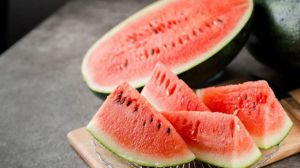The process of seed germination and growth.

I. Imbibition
When seeds germinate and grow, when the seeds are soaked in water or dropped into wet soil, the hydrophilic substances in the seeds attract water molecules, which will make the seed grow rapidly. At the beginning of imbibition, the water absorption will be faster, and then it will gradually slow down. As a result of imbibition, the seed coat softens or ruptures, and its permeability to gases, etc., increases, which promotes germination.
II. Hydration and enzyme activation
When the seed water absorption stage is over, the seed cell wall will be hydrated with protoplasm, the seed enzymes will also begin to activate, respiration and metabolism will increase dramatically.
III. Seed embryo breaks through seed coat
The seed embryo breaks through the seed coat and then increases in size. Most seeds grow the radicle first and then the embryo.
IV. Growing into seedlings
Seeds grow radicles, embryos will gradually grow roots, stems, leaves, and then form seedlings.
- Prev

Varieties of watermelon
Black Beauty: the flesh of this variety of watermelon is tighter and sweeter than other varieties. Jingxin watermelon: the fruit is nearly spherical, also known as Thunder melon, the sweetness of the melon flesh is very high, the taste is also very good. Special Xiaofeng watermelon: the origin is Taiwan, this kind of watermelon has thin skin, light green stripes and crystal yellow flesh.
- Next

Is it better to fertilize with "eggshell"? Throw some in the flowerpot, the flowers are in full bloom!
Friends who have spent a period of time must have spent a lot of energy on their own plants and flowers. Huahua understands that the energy it takes to grow a flower is almost the same as raising a child. It's really tiring. But then again, how can you grow healthy plants and flowers without a little effort?
Related
- What if the leaves of potted flowers turn yellow?
- Florescence Control of several Flowers
- Anti-freezing technology and post-freezing nursing technology of flowers
- What is the classification of flowers? What are the common methods of flower classification?
- Prevention and control of alkali and acid damage of flowers in courtyard
- Technology of Anti-freezing and restoring growth of Flower seedlings in greenhouse and greenhouse
- How does flower fertilization not hurt the root? Fertilization technology of flowers
- Key points of disinfection in flower greenhouse
- Several pesticides that are banned or used cautiously in flowers
- How to fertilize the flowers that watch the leaves?

